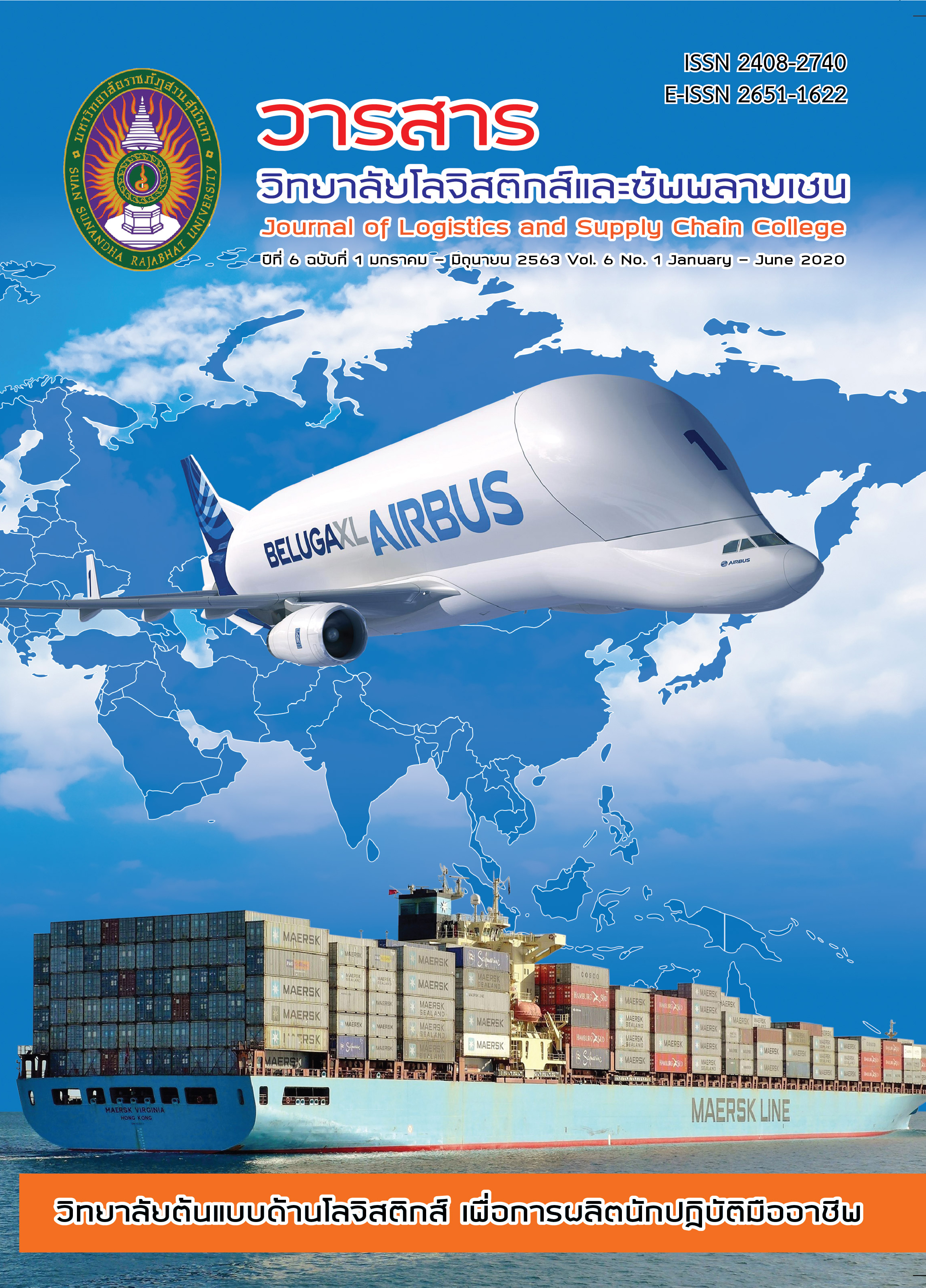Study of Risk Factors in the Supply Chain of Pure White Sugar for Export to Japan
Abstract
This research has a purposes 1) to study the supply chain of pure white sugar, export
to Japan’s case study company 2) to analyze risk factors occurring in company supply chain case study in order 3) to offer the risk management guidelines that occur in the company supply chain. Research model is a quantitative research. This research has collected information. The plant from sugarcane farmers in Ratchaburi quantity 9 the water-based sugar factory in Ratchaburi province 2 properties and the end of the water from United Standard Company 1 terminal is limited to a specific method of selection. Research tools are 1) in-depth
interviews (In Depth Interviews) 2) risk assessment, fault and Daira potential (Failure Mode and Effect Analysis) and 3) scor model. Research has found that the pure white sugar supply chain consists of Sugarcane farmer in Ratchaburi Sugarcane plantation and sugarcane trees will be collected by the producer of sugar production plant in Ratchaburi, to be processed into pure white sugar. Then the factory sends to the United Standard Company. The terminal is limited to the export of pure white sugar to Japan. Supply Chain analysis Results The pure white sugar is exported to Japan, both the water, the middle water and the downstream and using the SCOR Model to divide risk factors.The water source has a total of 8 factors. The medium-water production risk factors both in total 8 factors. Such as the downstream vacuum packaginghas 9 factors for all risks. Risk chain assessment results for pure white sugar At the end of the water, the maximum risk of an enemy’s intermediate risk is to handle the return and the destination is not quality products.
References
ขั้นตอนการส่งออกนํ้าตาลทรายขาวบริสุทธิ์. บริษัท ยูไนเต็ด สแตนดาร์ด เทอร์มินัล (2562)
ทวีศักดิ์ เทพพิทักษ์. (2550). หนังสือการจัดการโลจิสติกส์และโซ่อุปทาน (LOGISTICS AND SUPPLY CHAIN MANAGEMENT). กรุงเทพฯ: สํานักพิมพ์ จามจุรีโปรดักท์
มลฤดี จันทรัตน์ และวิวัฒน์ ไม้แก่นสาร. (2562). การวิเคราะห์โซ่อุปทานส่วนต้นนํ้าของข้าวสังข์หยดเมืองพัทลุงด้วย SCOR Model. คณะนวัตกรรมการจัดการเกษตร, สถาบันการจัดการปัญญาภิวัฒน์
รายงานประจําปีของสถานประกอบการ. บริษัท นํ้าตาลบ้านโป่ง จํากัด (2562)
รายงานการผลิตอ้อยของประเทศไทย ประจําปีการผลิต 2560/61. ค้นเมื่อ 8 ธันวาคม 2562, จาก http://www.ocsb.go.th
แววมยุรา คําสุข. (2561). การศึกษาปัจจัยที่มีผลต่อความเสี่ยงในโซ่อุปทานของอุตสาหกรรมยานยนต์ไทย. คณะบริหารธุรกิจ, มหาวิทยาลัยหัวเฉียวเฉลิมพระเกียรติ
สมชาย ไตรรตันภิรมย์. (2555). เอกสารประกอบการบรรยายการบริหารความเสี่ยง. สํานักงานคณะกรรมการการอุดมศึกษา
สุรเดช เลิศสมบูรณ์สุข และ ถิรนันท์ ทิวาราตรีวิทย์. (2558). การวิเคราะห์ความเสี่ยงด้านต้นทุนการขนส่งสําหรับธุรกิจฟาร์มเห็ด. ในการประชุมวิชาการ การนําเสนอผลการวิจัยระดับชาติ ครั้งที่ 5 ในหัวข้อการพัฒนางานวิจัยรากฐานสําคัญของไทย ก้าวไกลสู่เวทีสากล, หน้า 79. 17-18 ธันวาคม 2558 ณ ศูนย์ประชุมมหาวิทยาลัยราชภัฏภูเก็ต จังหวัดภูเก็ต.
Franceschini, F., & Rossetto, S. (1997a). Design for quality: Selecting Products Technical Features
Quality Engineering, 9(4), 681-688.
Fraser, M. (1994). Quality In Higher Education: An International Perspective, In Green, D. (Ed.),
What IsThe Quality In Higher Education? Open University Press and Society for Research
into Higher Education, Buckingham, 101-11.



